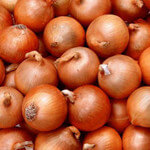Table of Contents
 The doctrine of signatures is an ancient herbalist philosophy attributed to Paracelsus (1491-1541) and later popularized by the German shoemaker Jakob Bohme (1575-1624). It states that all fruits and vegetables share aesthetic properties or “signatures” with the organ they benefit. While allopathic medicine has attempted to write off the doctrine as superstition, studies have repeatedly shown that its core principles are true. The kidney bean, for example, not only resembles a kidney in shape and color, but also helps to maintain kidney functioning when regularly consumed. Let’s take a look at some other examples.
The doctrine of signatures is an ancient herbalist philosophy attributed to Paracelsus (1491-1541) and later popularized by the German shoemaker Jakob Bohme (1575-1624). It states that all fruits and vegetables share aesthetic properties or “signatures” with the organ they benefit. While allopathic medicine has attempted to write off the doctrine as superstition, studies have repeatedly shown that its core principles are true. The kidney bean, for example, not only resembles a kidney in shape and color, but also helps to maintain kidney functioning when regularly consumed. Let’s take a look at some other examples.
Walnuts – Brain
With its two hemispheres, cranium-like shell, and knotted folds, the common walnut looks like the human brain on many levels – and the brain is exactly what it benefits. Walnuts are the only nut that contains large amounts of omega-3 fatty acids, which help to prevent cognitive decline since mammalian brains are composed of, and require, the exact same acids.
Grapes – Lungs
Bunched grapes closely resemble the branches of alveoli that comprise our lungs, and which allow oxygen to pass from the lungs to the bloodstream. Grapes are proven to reduce the risk of lung cancer, and the chemical proanthocyanidin – present in grape seeds – can minimize the risk of allergy-related asthma.
Tomatoes – Heart
Like the human heart, tomatoes are red and usually contain four chambers when sliced. They are an unbeatable source of lycopene, a plant chemical that helps prevent coronary heart disease and which neutralizes the harmful effects of LDL cholesterol. Furthermore, tomatoes are rich in folate, which aids the production of oxygen-carrying red blood cells – the very cells that the heart pumps around the body.
Carrots – Eyes
A sliced carrot strongly resembles the human eye, even down to the complex pattern of the iris. Is nature telling us something? Carrots are extremely rich in beta-carotene, a plant chemical that minimizes the chances of contacting cataracts and developing age-related macular degeneration (a common eye condition that affects approximately 25 percent of individuals above the age of 65).
Avocados – Womb
The womb-shaped avocado takes approximately nine months to grow from blossom to ripened fruit, and contains an unusually large seed (“baby”) in its center. Eating avocados helps to stabilize female hormones, remove excess birth weight, and prevent cervical cancer.
Figs – Testicles
If avocados were designed for female health, then the testicle-shaped figs were surely designed for male health. These sweet fruits hang in pairs, are protected by a delicate skin, and when sliced, reveal thousands of stringy white seeds. Figs are known to increase sperm count and sperm mobility, and can help men overcome sterility.
Other Examples
Mushrooms – A sliced mushroom strongly resembles the human ear. Incidentally, they are also one of the few vegetables that contains vitamin D, which helps to prevent tinnitus and hearing loss.
Celery – Celery sticks contain identical amounts of sodium (23 percent) to the bones they resemble. Like calcium – which celery also contains in high amounts – sodium is essential for healthy bones.
Ginger – A piece of ginger looks a lot like the stomach it is renowned for settling.
Sweet potatoes – Sweet potatoes closely resemble the human pancreas, and help to stabilize the blood sugar levels of diabetics.






